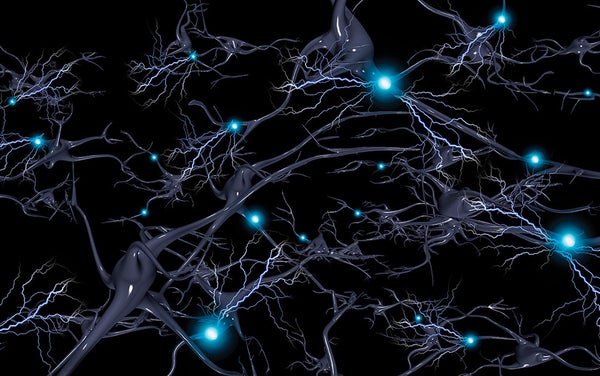The human brain is a powerhouse. The Milky Way galaxy has hundreds of billions of stars—just a fraction of the 100 trillion connections in our brains that enable us to sense, think and act. Our minds are the result of countless neuronal firings that happen every millisecond. Across animals, brain size is usually tightly correlated with body size—the encephalization quotient, as it's called. Elephants score a 1 or 2 on this measure, long-finned pilot whales 2 to 3. Humans? We score between 7 and 8. Among the gains from this outsize brain is the work of neuroscientists, philosophers and even poets. Read this collection for a look at the most astounding recent brain discoveries.
Consciousness is perhaps humans' most complex aspect. Our perception of the world builds our individual realities—and no two are alike. The ventromedial prefrontal cortex may produce a fundamental model of the self and knit together versions of us from past and present—even projecting into the future. New discoveries for detecting consciousness in comatose people illuminate the remarkable persistence of the mind.
We are self-aware, yes. But how does that awareness integrate with a complicated and ever-changing world? A nonstop scanning and filtering system in the brain selects the most essential elements from our surroundings to help us thrive. Special brain regions are activated to help us physically navigate our surroundings and recognize faces. From birth we have an innate ability with numbers, and we grow into a period of adolescence marked by sensitivity to social cues and community acceptance.
On supporting science journalism
If you're enjoying this article, consider supporting our award-winning journalism by subscribing. By purchasing a subscription you are helping to ensure the future of impactful stories about the discoveries and ideas shaping our world today.
As with any complex machine, errors can arise. Leaks in the protective blood-brain barrier can trigger events leading to Alzheimer's disease and other dementias—a process that scientists are urgently trying to prevent. Acting out dreams can be a telltale early sign of brain disorders. Even viruses such as the one that causes COVID can produce lasting neurological problems, although precisely how is a fresh area of study.
The brain is wonderfully self-sustaining, even after many decades of firing away. Important maintenance includes getting ample sleep, which neuroscientists now believe flushes toxins and helps to consolidate memories. A positive attitude may affect how well our immune systems function. And here's both bad and good news on aging and the brain: after we turn 65, our risk of dementia increases, but stress seems to have less of an effect on our happiness.
Around the beginning of the 20th century Santiago Ramón y Cajal—the father of modern neuroscience—described neurons, the branching and tangled cells that make up brain matter, as “mysterious butterflies of the soul.” More than 100 years later the enigma and marvel of the human brain endures. We know much more than when he first looked through his microscope and eyed that mystery. For some, the final frontier will be not in the reaches of space but as close as can be.
